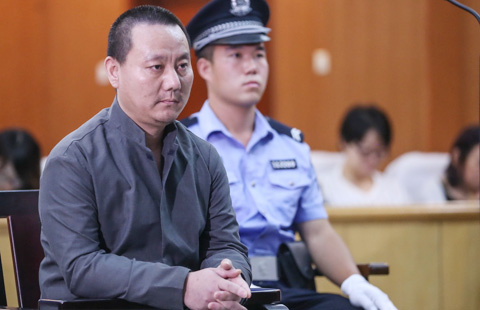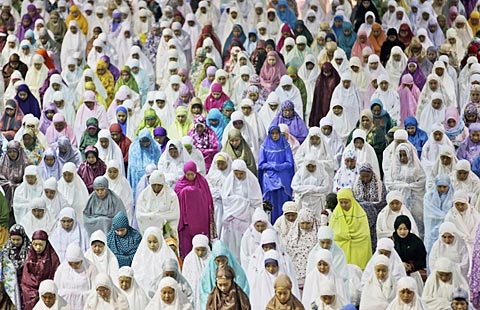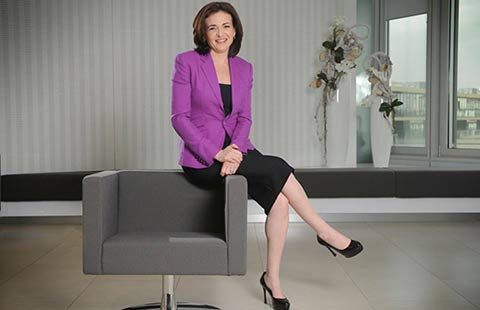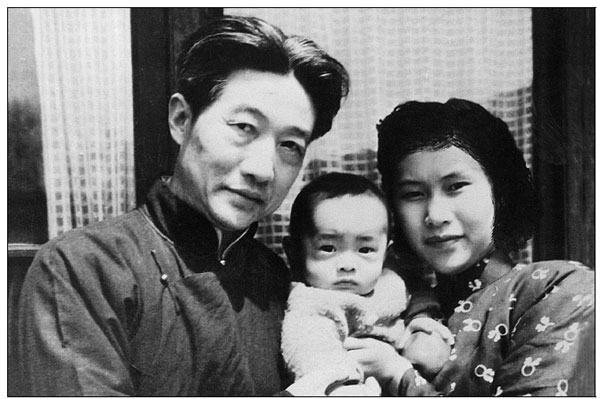Woman behind the artist
Updated: 2015-06-18 15:07
By Lin Qi(China Daily USA)
|
||||||||
Liao Jingwen, widow of famed painter Xu Beihong, devoted her life to his legacy, Lin Qi reports.
Liao Jingwen, widow of the great painter and art educator Xu Beihong (1895-1953), died peacefully on Tuesday night at her residence in Beijing. She was 92.
She was reported to have been authenticating a painting attributed to Xu on Monday, when she was last heard talking.
Xu Qingping, son of Liao and Xu Beihong, says: "All her life, she made enormous contribution to the country and especially its art course.
"She fulfilled her duties as a faithful mother and a respected elder of our family. We feel so grateful to her."
Liao is considered "a woman who was born and lived for the sake of Xu Beihong". She was a devoted caretaker and assistant of the artist, who struggled with poor health and juggled many social activities in his late years.
Over the six decades since Xu's sudden death, she immersed herself in the remembrance of her late husband and dedicated herself to extending the influence of his legacy.

Ma Lu, who teaches oil painting at Beijing's Central Academy of Fine Arts, saw Liao only a few times but was impressed by her elegance and kindness.
"She always wore a red beret in winter, even when she dined," he remembers. "The cap was quite old but made her look spirited. Her family said she liked it so much because she bought it in Paris (where Xu Beihong studied and lived for years)."
"I not only love Xu Beihong. I'm also his admirer," Liao often told media. "When I'm alone, all these sweet memories (between us) re-emerge in my mind. They make me happy. They also bring me agony."
Liao first met Xu when she was 19. Born in Changsha, Hunan province, she traveled to Guilin in the Guangxi Zhuang autonomous region in 1942. At the time Xu was working on the opening of an art college in Chongqing. He went to Guilin to scout for a librarian and interviewed Liao, who was one of the many applicants.
The two fell in love despite the age gap - Liao was 28 years younger than the artist. After getting married in 1946, they moved to Beijing, where Xu headed the Beiping Art School, later renamed the Central Academy of Fine Arts in 1950.
They had a son and a daughter. But the family's happiness came to a sudden end when Xu died from brain hemorrhage at 58.
Shortly afterward, Liao made a generous donation to the Ministry of Culture, including some 1,200 works of Xu and more than 1,000 Chinese paintings in his collection, among other books, calligraphy pieces and important art documents.
She also donated a spacious courtyard house in Beijing, which Xu had bought for her. It was later converted to the Xu Beihong Memorial Museum, where the donations are displayed.
"For me, Beihong was the most important person. He was gone, so why would I still keep such things?"
Liao directed the public museum until her death. In 2005, she sold at an auction the only two works of Xu in her own possession to save the public institution from financial strain.
"I wanted to have the two works accompany me to my tomb. But after many sleepless and tearful nights, I decided to transfer them to people who will love them as much as I did," she told China Daily in 2005.
Liao also opened a studio at the museum offering painting courses.
She was occupied with much appraisal work: Xu's paintings are sought after in the market and fetch high prices at auctions. There were, therefore, many fakes.
"I wish that after I die, I could reunite with Beihong. I will rest my head on his chest and tell him what I've gone through all these years and the pain I suffered from missing him," Liao once said.
Contact the writer at linqi@chinadaily.com.cn
|
Liao Jingwen with her husband, Xu Beihong, and son, Xu Qingping. Liao spent most of her life protecting and cherishing the works of Xu Beihong, one of China's greatest artists. Provided To China Daily |
| Six Galloping Horses, an ink painting by Xu Beihong, is on display at a museum in Beijing in 2014. Wang Zhao / CFP |
(China Daily USA 06/18/2015 page8)

 Ten photos you don't wanna miss – June 18
Ten photos you don't wanna miss – June 18
 Man with 15 girlfriends charged with fraud
Man with 15 girlfriends charged with fraud
 Heavy rain, flood hit many parts of China
Heavy rain, flood hit many parts of China
 Muslims around the world mark first eve of holy month
Muslims around the world mark first eve of holy month
 Top 5 wealthiest women in technology
Top 5 wealthiest women in technology Warriors beat Cavaliers to clinch NBA title
Warriors beat Cavaliers to clinch NBA title
 Saving dogs from dog meat carnival
Saving dogs from dog meat carnival
 Ten photos you don't wanna miss - June 17
Ten photos you don't wanna miss - June 17
Most Viewed
Editor's Picks

|

|

|

|

|

|
Today's Top News
Gunman kills nine people in South Carolina church shooting
US House moves to revive Obama's Pacific trade pact
Hong Kong lawmakers reject election reform proposal
Lies and false hopes entrap Xinjiangers
China's economic strategy focus of panel
UN strategy for long term
topic of debate
Donald Trump announces bid for
US presidency
Vote to begin on Hong Kong's election reform
US Weekly

|

|

